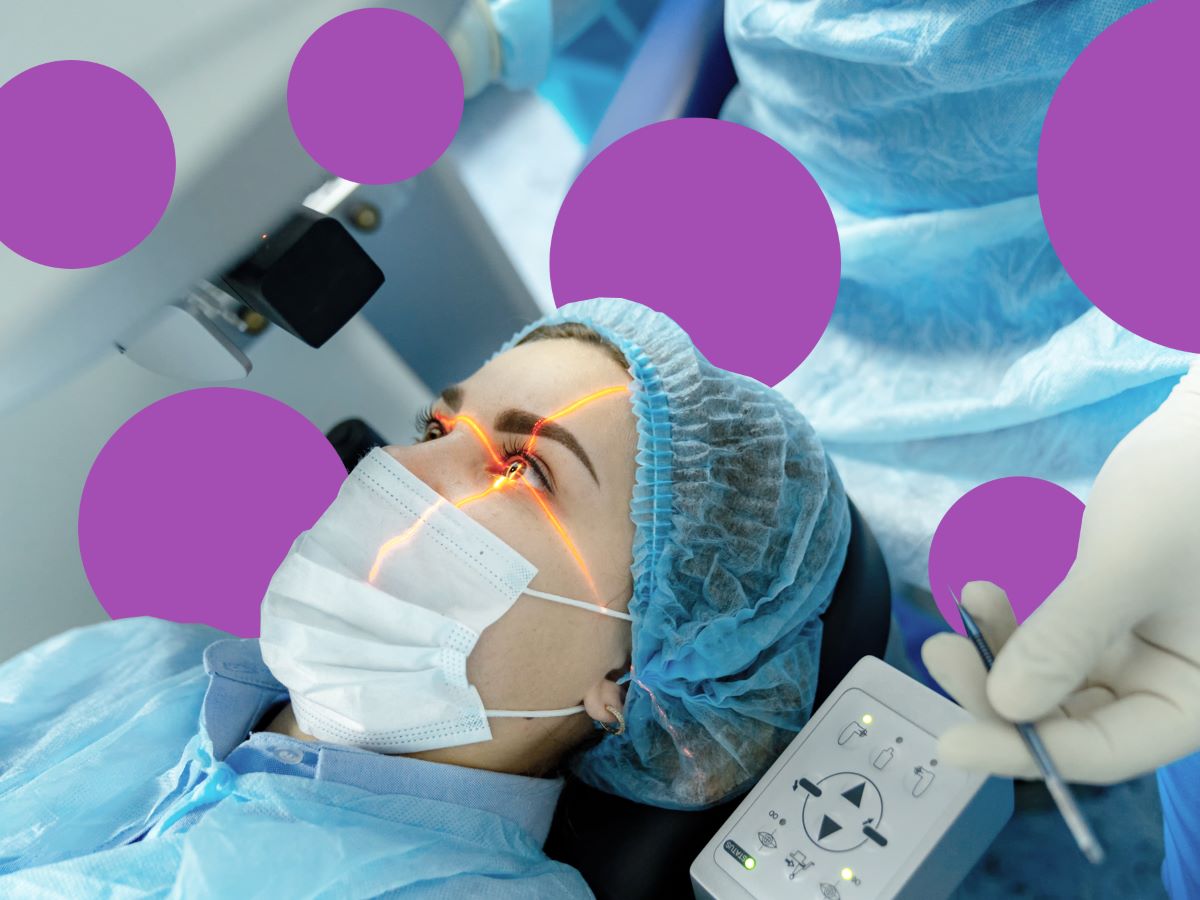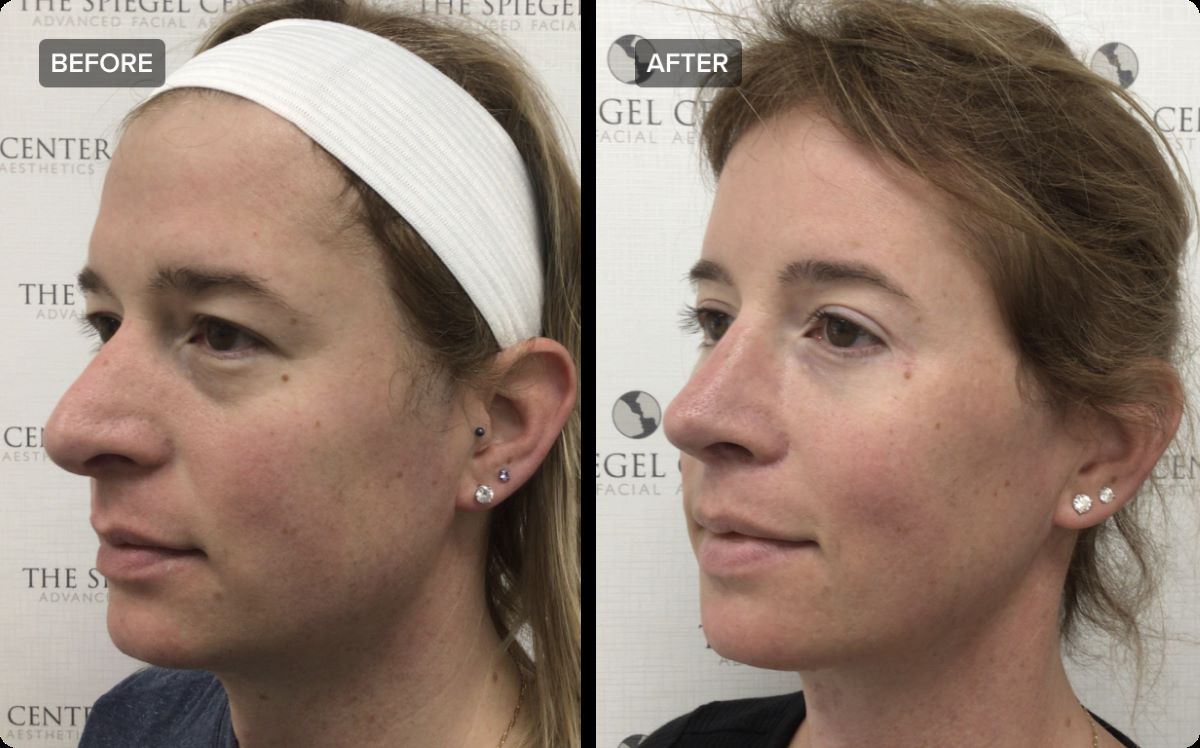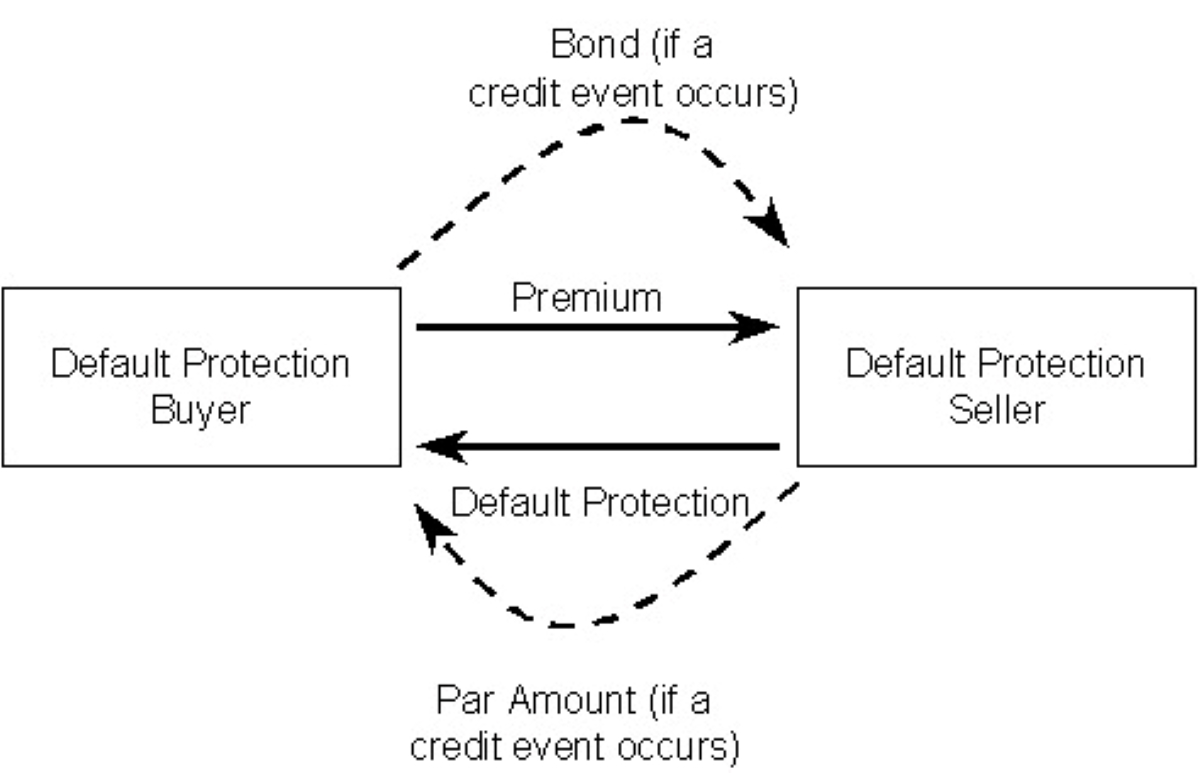

Finance
What Insurance Covers LASIK Eye Surgery
Published: November 23, 2023
Finance your LASIK eye surgery with insurance and get the vision correction you need. Find out what insurance covers LASIK and start seeing clearly today.
(Many of the links in this article redirect to a specific reviewed product. Your purchase of these products through affiliate links helps to generate commission for LiveWell, at no extra cost. Learn more)
Table of Contents
- Introduction
- Understanding LASIK Eye Surgery
- Why Get LASIK Eye Surgery?
- The Cost of LASIK Eye Surgery
- Types of Insurance Coverage for LASIK Eye Surgery
- Health Insurance Coverage for LASIK Eye Surgery
- Vision Insurance Coverage for LASIK Eye Surgery
- Medicare Coverage for LASIK Eye Surgery
- Medicaid Coverage for LASIK Eye Surgery
- Other Financing Options for LASIK Eye Surgery
- Conclusion
Introduction
LASIK eye surgery has become a popular option for individuals looking to correct their vision and reduce their dependence on glasses or contact lenses. This procedure utilizes laser technology to reshape the cornea, thereby improving the individual’s ability to see clearly. However, one common concern among those considering LASIK eye surgery is the cost.
When it comes to the cost of LASIK eye surgery, it is important to understand what insurance coverage may be available. While not all insurance plans provide coverage for this elective procedure, there are options to consider that can help mitigate the financial burden.
In this article, we will explore the various types of insurance coverage for LASIK eye surgery, including health insurance, vision insurance, Medicare, and Medicaid. We will also discuss other financing options that individuals can explore to make LASIK eye surgery more affordable.
By understanding the available insurance coverage options, individuals can make an informed decision regarding their LASIK eye surgery and choose the best financial path for their needs. So, let’s dive in and explore what insurance covers LASIK eye surgery.
Understanding LASIK Eye Surgery
LASIK, which stands for Laser-Assisted In Situ Keratomileusis, is a popular refractive surgery procedure that aims to correct vision problems such as nearsightedness, farsightedness, and astigmatism. The surgery involves using a laser to reshape the cornea, which is the clear front surface of the eye, to improve the eye’s ability to focus light properly.
During the LASIK procedure, the surgeon creates a thin flap on the cornea using a microkeratome or a femtosecond laser. This flap is then lifted to expose the underlying corneal tissue. The excimer laser, a specialized tool, is used to remove a precise amount of corneal tissue to reshape the cornea and correct the refractive error. After the cornea is reshaped, the surgeon repositions the flap, allowing it to adhere naturally without the need for sutures.
LASIK eye surgery is typically a quick and relatively painless procedure. Most patients experience improved vision immediately after the surgery, with the full benefits becoming apparent within a few days or weeks. The success rate of LASIK is high, and many individuals achieve 20/20 vision or better.
It is worth noting that not everyone is a suitable candidate for LASIK eye surgery. Factors such as the individual’s eye health, age, and prescription will determine if LASIK is the appropriate choice. A comprehensive eye examination and consultation with an experienced ophthalmologist will help determine if LASIK is the right option for a particular individual.
While LASIK eye surgery can bring numerous benefits, such as freedom from glasses and contact lenses, it is important to consider the potential risks and complications involved. These may include dry eyes, glare, halos around lights, and temporary or permanent changes in vision. It is crucial for individuals to have realistic expectations and thoroughly discuss any concerns or questions with their eye surgeon before deciding to proceed with LASIK.
Why Get LASIK Eye Surgery?
There are several reasons why individuals choose to undergo LASIK eye surgery. Let’s explore some of the key reasons why people opt for this procedure:
- Improved Vision: The primary motivation for many individuals to get LASIK eye surgery is the desire for improved vision. LASIK can correct common refractive errors, such as nearsightedness, farsightedness, and astigmatism, allowing individuals to see clearly without the need for glasses or contact lenses.
- Convenience: LASIK offers convenience by reducing or eliminating the reliance on visual aids, such as glasses or contacts. This can be particularly beneficial for individuals who engage in active lifestyles, sports, or outdoor activities, as they no longer need to worry about their glasses getting in the way or their contact lenses drying out or causing discomfort.
- Cost Savings: While LASIK eye surgery initially incurs a cost, it can lead to long-term savings. Over time, the costs associated with purchasing and maintaining glasses or contact lenses can add up significantly. By investing in LASIK, individuals can potentially save money on prescription eyewear and related expenses.
- Improved Self-Confidence: Many individuals experience a boost in self-confidence after LASIK eye surgery. The freedom from constantly wearing glasses or dealing with contact lenses can improve self-esteem and enhance one’s overall appearance.
- Enhanced Career Opportunities: Some professions, such as aviation, military, or certain sports and activities, have strict vision requirements. LASIK eye surgery can help individuals meet these visual standards, potentially opening up new career opportunities that were previously inaccessible.
- Better Quality of Life: LASIK eye surgery can greatly enhance the quality of life for individuals who have struggled with poor vision. The ability to see clearly without visual aids can make daily tasks easier and improve overall enjoyment of activities, hobbies, and interactions with others.
It is important to note that while LASIK can offer numerous benefits, it may not be suitable for everyone. Each individual’s eye health and prescription need to be assessed to determine if LASIK is the right choice. Consulting with an experienced eye surgeon and undergoing a thorough evaluation is crucial in making an informed decision.
The Cost of LASIK Eye Surgery
When considering LASIK eye surgery, it is important to understand the associated costs. The cost of LASIK can vary depending on several factors, including the location, the surgeon’s experience, and the technology used. While the cost can be a significant investment, many individuals find that the long-term benefits outweigh the upfront expense.
On average, LASIK eye surgery in the United States can range anywhere from $2,000 to $4,000 per eye. This cost typically includes pre-operative consultations, the procedure itself, and post-operative care. However, it is essential to note that the cost can vary based on additional factors such as the complexity of the individual’s vision correction needs and any potential enhancements, like Wavefront-guided technology or bladeless LASIK.
While many insurance plans consider LASIK to be an elective procedure, it is worth exploring if any coverage is available. Some insurance providers offer vision plans that may provide a certain level of coverage or discounts for LASIK. It is advisable to check with your insurance company and review your plan to understand the extent of coverage, if any, that may be available.
It’s also important to consider the long-term cost savings that LASIK can provide. Over time, the expenses associated with purchasing and maintaining glasses or contact lenses, such as frame replacements, lens upgrades, and solution purchases, can accumulate. By investing in LASIK, many individuals find that they save money in the long run.
Additionally, some LASIK clinics offer financing options to make the procedure more affordable. These financing plans often allow individuals to pay for the surgery in manageable monthly installments, easing the financial burden. It is essential to review the terms and conditions of any financing options to ensure they align with your budget and needs.
When considering the cost of LASIK, it is crucial to choose an experienced and reputable surgeon. While cost should not be the sole determining factor, it is worth investing in a skilled and qualified surgeon to ensure optimal results and minimize the risk of complications.
Ultimately, the cost of LASIK eye surgery should be weighed against the potential benefits and improved quality of life that it can offer. It is advisable to consult with an eye surgeon for a comprehensive evaluation and to discuss the associated costs and financing options in detail.
Types of Insurance Coverage for LASIK Eye Surgery
While LASIK eye surgery is often considered an elective procedure, there are various types of insurance coverage that individuals can explore to help offset the cost. Let’s take a closer look at the different insurance options that may provide coverage for LASIK:
- Health Insurance: In some cases, health insurance may cover LASIK eye surgery if it is deemed medically necessary. For example, if an individual has a condition that impairs their vision and LASIK is recommended as part of their treatment plan, health insurance may provide coverage. It is essential to review your health insurance policy or contact your provider to determine if LASIK is covered and what the specific requirements are.
- Vision Insurance: Unlike health insurance, vision insurance plans are specifically designed to cover vision-related expenses. While not all vision insurance plans cover LASIK, some may provide discounts or partial coverage. It is important to review your vision insurance plan’s terms and contact your provider to inquire about any available coverage or discounts for LASIK.
- Medicare: Original Medicare, Part A and Part B, typically does not cover LASIK eye surgery because it is considered an elective procedure. However, in some rare cases, Medicare may provide coverage if LASIK is performed for a specific medical reason. It is advisable to consult with your eye surgeon and Medicare to determine if you meet the criteria for coverage.
- Medicaid: Medicaid is a government program that provides medical assistance to low-income individuals and families. Coverage for LASIK eye surgery varies by state. While some states may include LASIK as a covered procedure, others may have specific eligibility criteria or restrictions. It is best to check with your state’s Medicaid office to understand the coverage options available to you.
It’s important to note that even if insurance coverage is available for LASIK, it is essential to verify the specific details of coverage, such as the percentage of coverage, any deductibles or copayments, and any pre-authorization requirements.
In some cases, insurance plans may offer discounts or negotiated rates with specific LASIK providers. It can be beneficial to inquire with both your insurance provider and LASIK clinics to explore any available discounts or cost-saving arrangements.
If insurance coverage for LASIK eye surgery is not available or limited, individuals can still explore other financing options to make the procedure more affordable. This can include utilizing flexible spending accounts (FSAs) or health savings accounts (HSAs) that allow funds to be set aside pre-tax for medical expenses.
Considering the various insurance coverage options and exploring financing avenues can help individuals make an informed decision about their LASIK eye surgery and potentially reduce the financial burden associated with the procedure.
Health Insurance Coverage for LASIK Eye Surgery
While health insurance typically does not cover LASIK eye surgery as it is considered an elective procedure, there are instances where health insurance may provide coverage for LASIK if it is deemed medically necessary. Let’s explore health insurance coverage options for LASIK:
1. Medical Necessity: If an individual has a vision-related condition or impairment that significantly affects their daily life and LASIK is recommended as part of their treatment plan, health insurance may provide coverage. This may include conditions such as severe nearsightedness, farsightedness, or astigmatism that cannot be adequately corrected with glasses or contact lenses.
2. Prior Authorization: Some health insurance plans require prior authorization before approving coverage for LASIK eye surgery. This means that the individual and their eye surgeon would need to provide detailed information about the medical necessity and justification for the procedure. The insurance company may review the case and decide whether to grant coverage based on their specific criteria.
3. Out-of-Network Providers: Health insurance plans often have a network of preferred providers, and coverage may be limited to those within the network. If an individual chooses to have LASIK performed by an out-of-network provider, their insurance coverage may be reduced or not covered at all. It is important to check with your insurance company to understand the requirements and coverage limitations associated with out-of-network providers.
4. Plan Exclusions: Some health insurance plans explicitly exclude coverage for LASIK eye surgery regardless of medical necessity. It is essential to thoroughly review your health insurance policy or contact your insurance provider to determine if LASIK is excluded from coverage.
It is important to note that even if health insurance coverage for LASIK eye surgery is available, there may still be out-of-pocket costs. This can include deductibles, copayments, and any expenses associated with pre-operative consultations and post-operative care.
When considering health insurance coverage for LASIK, it is recommended to consult with your insurance provider to fully understand the specific criteria, documentation requirements, and coverage details. Additionally, discussing your options with your eye surgeon can help determine if LASIK is medically necessary and explore potential alternatives or additional treatments that may be covered by insurance.
If health insurance does not cover LASIK or only provides limited coverage, individuals may want to explore other financing options such as vision insurance, Medicare, Medicaid, or utilizing flexible spending accounts (FSAs) or health savings accounts (HSAs) to make LASIK eye surgery more affordable.
Vision Insurance Coverage for LASIK Eye Surgery
Vision insurance plans are specifically designed to cover expenses related to eye care and vision correction. While not all vision insurance plans cover LASIK eye surgery, some may provide discounts or partial coverage for the procedure. Here are some key points to consider regarding vision insurance coverage for LASIK:
- Coverage Options: Some vision insurance plans contract with specific LASIK providers and offer discounted rates or negotiated fees for their members. These plans may have a network of preferred LASIK surgeons and facilities, and coverage is generally limited to those providers. It is important to review your vision insurance policy or reach out to your provider to determine if LASIK coverage is available and what the specific terms and limitations are.
- Discount Programs: In lieu of comprehensive coverage, some vision insurance plans may offer LASIK discount programs for their members. These programs provide access to reduced rates for LASIK procedures at participating clinics. While not all costs may be covered, these discounts can significantly lower the overall expense of LASIK. It is advisable to inquire with your vision insurance provider about any available discount programs for LASIK.
- Plan Limitations: It is important to carefully review your vision insurance plan’s terms and conditions to understand any limitations or exclusions related to LASIK eye surgery. Some plans may have specific requirements or limitations, such as certain refractive error thresholds or minimum time as a member before being eligible for coverage. Being aware of these details will help you determine if your plan provides the desired LASIK coverage.
- Out-of-Network Coverage: Similar to health insurance, vision insurance plans often have a network of preferred providers. If an individual chooses to have LASIK performed by an out-of-network provider, their insurance coverage may be reduced or not covered at all. It is important to check with your vision insurance provider to understand the coverage limitations associated with out-of-network LASIK providers.
It is crucial to note that even with vision insurance coverage for LASIK, there may still be out-of-pocket costs such as deductibles or copayments. Additionally, any enhancements or specialized procedures, like Wavefront-guided LASIK or bladeless LASIK, may not be fully covered by vision insurance plans.
If your vision insurance does not provide coverage for LASIK eye surgery or only offers limited coverage, it may be worth exploring alternative financing options or discussing discounts directly with LASIK clinics. Some clinics may offer their own financing plans or discounts, especially for individuals without insurance coverage.
Prior to proceeding with LASIK eye surgery, it is essential to confirm coverage with your vision insurance provider and discuss all potential costs and payment options with your eye surgeon. This will ensure a clear understanding of the financial implications of the procedure and allow you to make an informed decision.
Medicare Coverage for LASIK Eye Surgery
Medicare is a federal health insurance program primarily designed for individuals who are 65 years or older, as well as certain younger individuals with disabilities. When it comes to LASIK eye surgery, Medicare typically does not cover the procedure as it is considered an elective or cosmetic surgery. However, there are some rare instances where Medicare may provide coverage for LASIK:
- Medical Necessity: Medicare may cover LASIK eye surgery if it is deemed medically necessary. This means that the procedure is required to diagnose or treat a vision-related medical condition, and other conventional treatments have failed or are not suitable. Examples may include cases where LASIK is necessary to correct severe vision impairments that impact an individual’s daily life or hinder their ability to perform essential activities.
- Documentation and Prior Authorization: If an individual believes that LASIK is medically necessary, they must provide detailed documentation and evidence to support this claim. This may involve working with an ophthalmologist who will evaluate the individual’s condition and provide the necessary medical records. Additionally, prior authorization may be required from Medicare before proceeding with the procedure.
- Cost Limitations: Even in cases where Medicare covers LASIK eye surgery due to medical necessity, it is important to note that there may still be out-of-pocket costs associated with the procedure. These costs typically include deductibles, copayments, and any expenses related to pre-operative consultations and post-operative care. It is crucial to consult with Medicare and the eye surgeon to understand any potential cost limitations beforehand.
It is important to note that each case is evaluated individually, and Medicare’s coverage decisions may vary. Additionally, Medicare Advantage (Part C) plans may have their own guidelines and coverage determinations for LASIK eye surgery.
If an individual believes they may meet the criteria for Medicare coverage of LASIK eye surgery, it is recommended to consult with their ophthalmologist and contact Medicare directly to discuss their specific situation. Medicare can provide guidance on the coverage requirements and documentation needed to determine if LASIK will be covered.
For individuals with Medicare coverage who are interested in LASIK eye surgery but do not meet the criteria for coverage, they may need to explore other financing options such as vision insurance, referring to their state Medicaid program, or utilizing flexible spending accounts (FSAs) or health savings accounts (HSAs) to make the procedure more affordable.
Medicaid Coverage for LASIK Eye Surgery
Medicaid is a government program that provides medical assistance to eligible low-income individuals and families. Coverage for LASIK eye surgery through Medicaid varies by state, as each state administers its own Medicaid program following federal guidelines. Let’s explore Medicaid coverage options for LASIK:
- State-Specific Coverage: Some states may include LASIK eye surgery as a covered procedure under their Medicaid program. This means that individuals who meet certain criteria and eligibility requirements may be able to receive Medicaid coverage for the surgery. It is important to contact your state’s Medicaid office to inquire about LASIK coverage availability and any specific guidelines that must be met.
- Eligibility Criteria: Each state sets its own eligibility criteria for Medicaid coverage. Qualification may be based on factors such as income level, household size, and specific medical conditions or disabilities. If LASIK eye surgery is covered by Medicaid in your state, you will need to meet the necessary eligibility requirements to receive coverage for the procedure.
- Prior Authorization: In states where Medicaid covers LASIK eye surgery, prior authorization may be required. This means that you must obtain approval from Medicaid before proceeding with the procedure. Prior authorization may involve submitting documentation or medical records to support the medical necessity of LASIK. It is crucial to follow the state-specific guidelines and obtain the necessary authorization before scheduling the surgery.
- Out-of-Pocket Expenses: While Medicaid coverage for LASIK eye surgery may be available, there may still be out-of-pocket costs involved. These can include deductibles, copayments, and any expenses related to pre-operative consultations and post-operative care. It is important to understand the potential financial responsibilities associated with the procedure and consult with Medicaid for a clear understanding of the costs involved.
It is important to note that Medicaid coverage for LASIK eye surgery varies from state to state, and not all states offer coverage for the procedure. It is crucial to contact your state’s Medicaid office or visit their website to understand the coverage options and eligibility requirements specific to your state.
If LASIK eye surgery is not covered by Medicaid in your state or if you do not meet the eligibility criteria, it may be worth exploring other financing options such as vision insurance, discussing discounts directly with LASIK clinics, or utilizing flexible spending accounts (FSAs) or health savings accounts (HSAs) to make LASIK more affordable.
It is recommended to consult with your ophthalmologist and contact your state’s Medicaid office to discuss your specific situation and determine whether LASIK eye surgery may be covered under your Medicaid coverage.
Other Financing Options for LASIK Eye Surgery
For individuals seeking LASIK eye surgery who do not have insurance coverage or are looking for alternative ways to manage the cost, there are several financing options available. These options can help make LASIK more affordable by allowing individuals to spread out the cost over time. Here are some financing options to consider:
- Financing Plans: Many LASIK clinics offer financing plans that allow individuals to pay for the surgery in manageable monthly installments. These plans often have flexible payment terms and may offer low or no interest rates. Before committing to a financing plan, it is important to review the terms and conditions, including the interest rates, repayment period, and any additional fees.
- Flexible Spending Accounts (FSAs) and Health Savings Accounts (HSAs): FSAs and HSAs are tax-advantaged accounts that individuals can use to save money for qualified medical expenses. Contributions to these accounts are made pre-tax, reducing your taxable income. LASIK eye surgery is generally considered a qualified expense, and funds from these accounts can be used to cover the cost of the procedure. It is important to note that contributions to FSAs are use-it-or-lose-it, meaning funds must be used within the plan year, while HSAs allow for rollover of funds from year to year.
- Personal Loans: Another option to consider is obtaining a personal loan from a financial institution, such as a bank or credit union. Personal loans provide a lump sum that can be used to cover the cost of LASIK eye surgery. Careful consideration should be given to the terms of the loan, including interest rates, repayment terms, and any associated fees. Shopping around and comparing loan options can help secure the most favorable terms.
- Credit Cards: Some individuals choose to use their credit cards to finance LASIK eye surgery. If you have a credit card with a low interest rate or a promotional period with no interest, this can be a viable option. However, it is important to pay attention to your credit card terms and ensure that you can manage the monthly payments without incurring significant interest charges.
- Employer Sponsorship: Some employers offer healthcare plans or reimbursement programs that include coverage for LASIK eye surgery. Inquire with your employer or human resources department to find out if any such benefits are available. Employer-sponsored programs may have specific eligibility criteria or limitations, so it is important to review the details carefully.
Prior to choosing a financing option, it is essential to evaluate your financial situation, consider interest rates and repayment terms, and assess the availability of discounts or negotiated rates with LASIK providers. It is also advisable to consult with the LASIK clinic and financing institutions to discuss the available options and determine the best fit for your needs and budget.
By exploring these financing options, individuals can make LASIK eye surgery more accessible and affordable, allowing them to benefit from improved vision and a better quality of life.
Conclusion
LASIK eye surgery offers individuals a life-changing opportunity to achieve clearer vision and reduce dependence on glasses or contact lenses. While the cost of LASIK can be a significant investment, it is important to explore the various insurance coverage options, financing plans, and potential discounts available to make the procedure more affordable. Understanding the landscape of insurance coverage for LASIK is essential in making an informed decision.
Health insurance coverage for LASIK eye surgery is often limited to cases where it is deemed medically necessary. Vision insurance plans may provide certain discounts or coverage options for LASIK, but it varies from plan to plan. Medicare and Medicaid coverage for LASIK is rare and typically requires meeting specific criteria, such as medical necessity. Exploring these insurance options is crucial to determine if coverage is available.
When insurance coverage is not available or insufficient, other financing options can help make LASIK more accessible. Financing plans offered by LASIK clinics allow for manageable monthly payments, while flexible spending accounts (FSAs) and health savings accounts (HSAs) can utilize pre-tax funds to cover LASIK expenses. Personal loans and credit cards may also serve as alternatives, but careful consideration of interest rates and repayment terms is necessary.
In conclusion, before embarking on the LASIK eye surgery journey, it is essential to thoroughly research and understand the available insurance coverage options and financing avenues. Consultation with eye surgeons, insurance providers, and LASIK clinics can provide valuable insights to make an informed decision based on individual circumstances and needs.
Ultimately, while evaluating the financial aspects of LASIK eye surgery is essential, it is equally important to prioritize the long-term benefits and improved quality of life that the procedure can offer. With the right approach and financial planning, LASIK can be a worthwhile investment in achieving clear vision and enhancing overall well-being.














